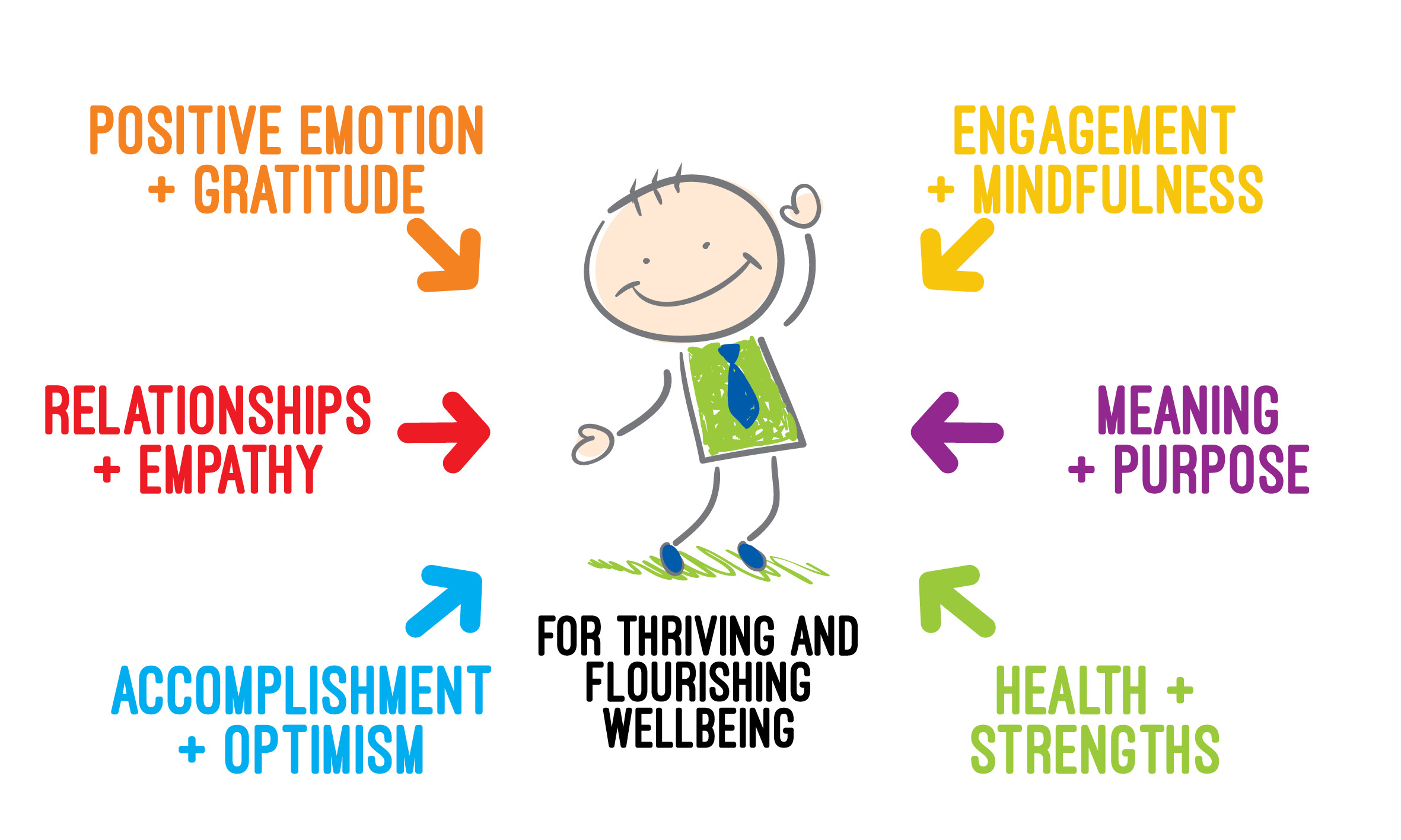Wellbeing Program
Wellbeing Program
Healthy Wellbeing is feeling optimistic and hopeful about your future, because you know that you are working towards becoming your best self.
Our mission is to transform wellbeing science by enabling students to develop their agency in the world by doing our program themselves, to remove their self-limiting beliefs about wellbeing and learning and to see challenges as opportunities for growth in both. Your role as teachers is to provide the environment so that students feel that they have the will to act and power to act. Our evidence-based lessons and activities are growth orientated mindset movers that arouse students’ interest and curiosity to want to learn more about themselves socially, emotionally and academically.
These include:
- Identifying and then using their personal character strengths in their daily lives.
- Practising the skills that they need to become resilient to respond well to and learn from challenges.
- Becoming self-aware and self-regulated to accept struggle and effort as the drivers of their growth.
- Learning how to show empathy for others and build respectful relationships with them.
- Unlocking their problem-solving thinking through Habits of Mind to be flexible.
We support teachers to enable students to use their agency to do the heavy lifting and be the active participants in growing their own wellbeing and learning. We provide for teachers, learning strategies, which act as growth mindset movers, in our Teacher Lesson Guides and tips for parents with our Parent Newsletter Articles that you email home. The adults don’t have to be experts in this space, students do the work.
The program has a Student Wellbeing Journal for each of the 13 years of schooling, supported by their own individual Teacher Lesson Guide, and reinforced by the comprehensively resourced website www.learningcurve.com.au. Visit this website to learn more.
There are also Wellbeing Journals for both teachers and school staff, called Wellbeing@School and Wellbeing@Work, to learn about how they can role model for their children and students how to work towards becoming their best versions of themselves by doing their own lessons and activities.
We look forward to building a wellbeing partnership with you to enhance student learning socially, emotionally and academically in your school.
Developing Skills and Competencies
Positive Education involves intentionally and explicitly teaching young people how to develop the skills and competencies to grow their brain’s abilities, called the cognitive domain while at the same time teaching them how to acquire the skills of social-emotional resilience, called the non-cognitive domain so that they can live a fulfilling and meaningful life.

Positive Emotion + gratitude
Being in charge of your emotions through your strengths. Developing the aspects of emotional literacy and making a positive difference using your signature character strengths.
Engagement + mindfulness
Connecting mindfully with yourself and the present moment. Developing the capacity to pay attention to what you need to pay attention to.
Relationships + empathy
Showing others matter by doing good to feel good, feeling good to do good and being respectful. Looking to the future with optimism and hope.
Meaning + purpose
Being passionate about something larger than yourself, doing the right thing and doing the thing right to make a positive difference in your world.
Accomplishment + optimism
Adopting growth mindsets to deliberately practise more difficult approaches to grow your brain’s abilities so that you can achieve what you set out to do.
Health + strengths
Having a healthy body and healthy mind by being regularly active, eating fresh whole foods and looking for what’s good in your life.
Learning Curve Wellbeing Program Implementation Process
Step 1: Reset your vision as a staff of what you want for your students.
Step 2: Use Appreciative Inquiry to hunt for good things that you are already doing to cultivate these behaviours in students and yourselves..
Step 3: Identify your champions, staff who are passionate about building student and staff wellbeing and resilience. They are your generators of positivity and optimism for others to feed off.
Step 4: Define accurate resilient wellbeing language; this develops a robust wellbeing culture.
Step 5: Assign wellbeing tasks based on the strengths of individual champions.
Step 6: Discover, share and celebrate successes, no matter how small (from little things, big things grow).
Step 7: Cross silos in the school.
Step 8: Normalise the crossings of the silo borders.
Step 9: The way we do things around here.
For a more detailed Implementation Process please click here
 The Learning Curve
The Learning Curve